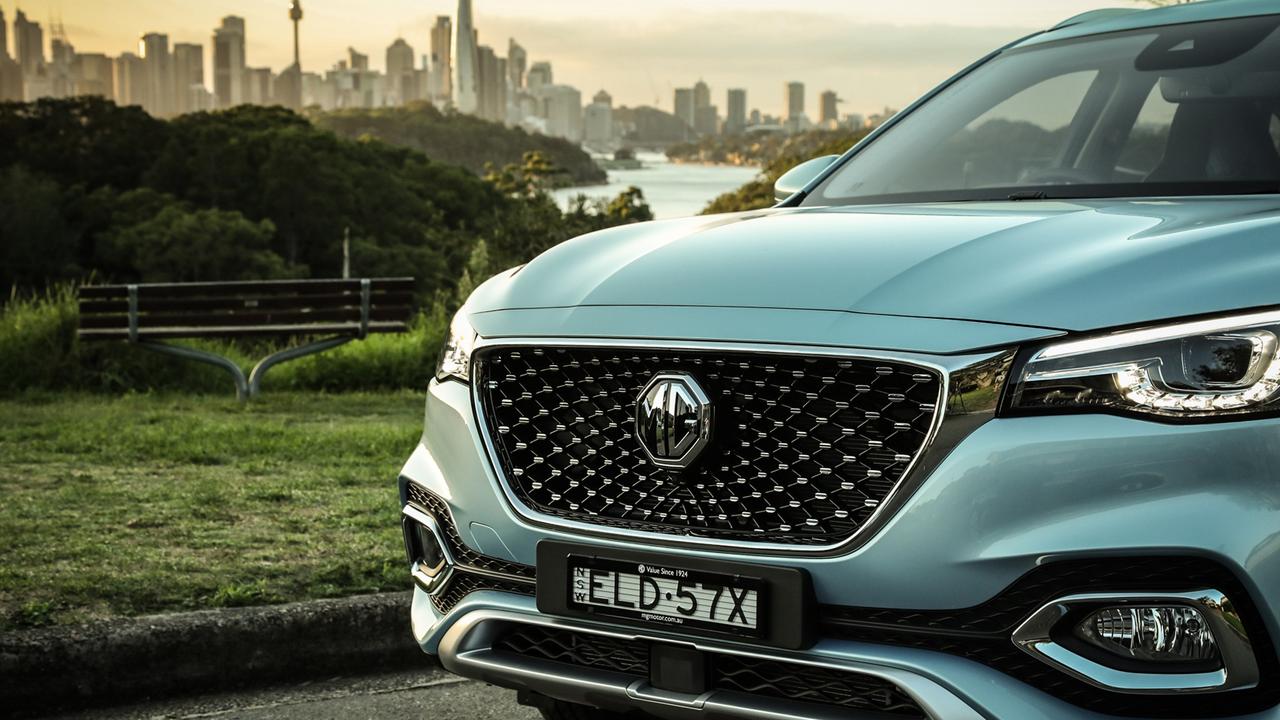MG HS PHEV reviewed: Chinese SUV promises the best of both worlds
This brand is on a roll in the local market but its latest offering is a bold departure from the formula behind its initial success.

Are plug-in hybrids really the best of both worlds? The MG HS +EV offers a pure electric drive of up to 63km, with a petrol engine backup for longer journeys.
But can this feature-packed mid-size SUV plug-in hybrid (PHEV) justify its $52,690 drive-away price tag?

Why does MG call it a +EV when it needs petrol?
The “plus EV” bit means there’s a small electric motor sidekick to go with a conventional petrol engine.
The rest of the world calls these plug-in hybrids (or PHEVs), but hey, let MG do its own thing. In isolation, this mid-size SUV’s 1.5-litre turbo petrol engine offers 119kW and 250Nm, but combined with the electric motor there’s a hefty 189kW and 370Nm. That makes it the most powerful production MG ever – yep, more than your dad’s old MGB GT V8. It translates to surprisingly zesty acceleration: 100km/h arrives in 6.9 seconds but by that speed the petrol engine’s making noisy, grating protests.

Enjoy cheap fuel bills if your daily journeys are less than 60km
The HS +EV’s 16.6kWh battery promises up to 63km from a single charge.
We found 55km to be more realistic, but really, many of us drive less than this each day.
It means the urban commute, school drop-off and shopping can be done without bothering the petrol engine.
At higher speeds the car rightly prioritises petrol power, saving silent battery electric driving for town and traffic.
An “EV” button gives the driver the final say on motor choice. At day’s end, if you have a garage or driveway, simply plug the MG into a household socket and you’ll be back to 100 per cent charge and 50km range by morning. With an empty battery the car informed us it’d be full in eight hours and 53 minutes.

There’s plenty to surprise and delight
Even the anti-China brigade should concede this HS sports some style. Its LED lights have crystal-like details, while the grille reminds of Mercedes’ clever web of front-end bling.
Inside are two-tone power and heated leather sport seats, a 12.3-inch digital driver display, electric tailgate, panoramic sunroof and 360-degree camera.
Rear passengers have reclining seats and excellent space.
A seven-year unlimited kilometre warranty appeals and $1589 for five services are cheap, although they’re needed every 10,000km.

Much to not like too, including the drive experience
In zero-emission EV mode, in the city, the HS +EV’s a charmer. When the petrol’s called into action, on freeway or back road, our fuel use rocketed. Despite the electric back-up, our combined average was 7.4L/100km: dramatically higher than a Toyota RAV4 (non plug-in) hybrid.
It’s not the most dynamic thing on the road. There’s plenty of body lean in turns, tyre grip’s not great and brakes are spongy and lifeless.
When harvesting energy back to the battery, the drive almost feels as though you’re stuck in treacle.
We found the airconditioning unable to cope with a Queensland summer, the infotainment screen slow to operate and the lane keep assist so grabby it was swiftly turned off.

Stop sitting on the fence, just get a full EV
You’re paying a mighty premium to get into this plug-in. The +EV is $49,690 drive-away in base Excite guise, or $52,690 for our test Essence: some $13,000 over petrol-only MG HS SUVs.
You’ll need to travel a long way using batteries only to be ahead financially. Instead of dabbling, why not commit to a full EV?
MG’s slightly smaller ZS EV, with 320km range, costs about $47,000 drive-away. Its fellow Chinese, the BYD Atto 3, offers 320km electric range for $48,000 plus on-roads.
A Hyundai Kona EV and Tesla Model 3 both offer almost 500km range for a little more than $60,000 plus on-roads, while offering impressive drive experiences.



